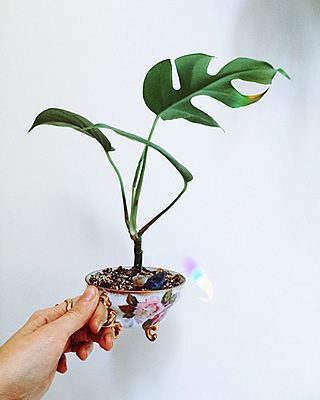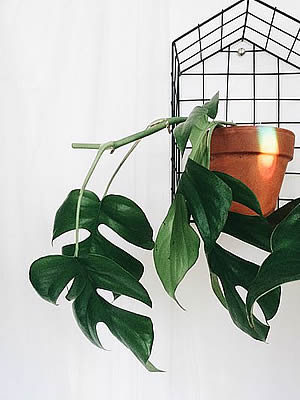The Mini Monstera is a rhizomatous climbing plant with a herbaceous texture and ornamental foliage, native to southern Thailand and Malaysia. It has been prominent in interior decoration, mainly for bringing the pattern of the Monstera (Monstera deliciosa). It features leathery, dark green, shiny leaves with the characteristic cuts and holes.
The young and small leaves often do not have the characteristic cuts, making it look like a common philodendron, especially if the plant is receiving little light. The stem is twining and sparsely branched and behaves like a philodendron, climbing on supports, or with a hanging characteristic. It emits adventitious roots at the nodes, allowing it to attach to the support. It flowers in spring and summer.

Its management is considered even easier than that of the Monstera, but the Mini Monstera is still hard to find in nurseries, although demand is increasing. It adds an “Urban Jungle” touch, very tropical and casual to the decor, making it a favorite of many decorators and architects currently.
Like other species of the Araceae genus, the Mini Monstera is a very rustic plant, resistant to pests and diseases. It contains calcium oxalate in its leaves, making it toxic to humans and pets but at the same time protecting the plant from slugs, caterpillars, and a multitude of pests common to other species.
It should be grown under diffused light, partial shade or light shade, in a substrate rich in organic matter, drainable, airy, and regularly irrigated. Keep the substrate moist during spring and summer, and gradually reduce watering during autumn and winter (in subtropical to temperate climates) to avoid rhizome rot.
It appreciates the heat and humidity of the tropics, so in indoor environments, avoid placing the plant in air-conditioned areas, and spray the plant daily with water in places with very low relative humidity. Protect the plant from drafts that may dry it out as well. Although it survives in low light conditions, you can obtain healthier and more lush plants if you provide more clarity, which can include morning sun, especially in winter.
Fertilize every 20 days with soluble NPK 10.10.10 fertilizers, or add a slow-release fertilizer like Osmocote or Basacote, respecting the fertilizer’s release interval. It also appreciates organic fertilizations. Repot annually or every two years to renew the substrate and move to a slightly larger pot. It can be easily propagated by cuttings of branches rooted in moist substrate throughout the year.


